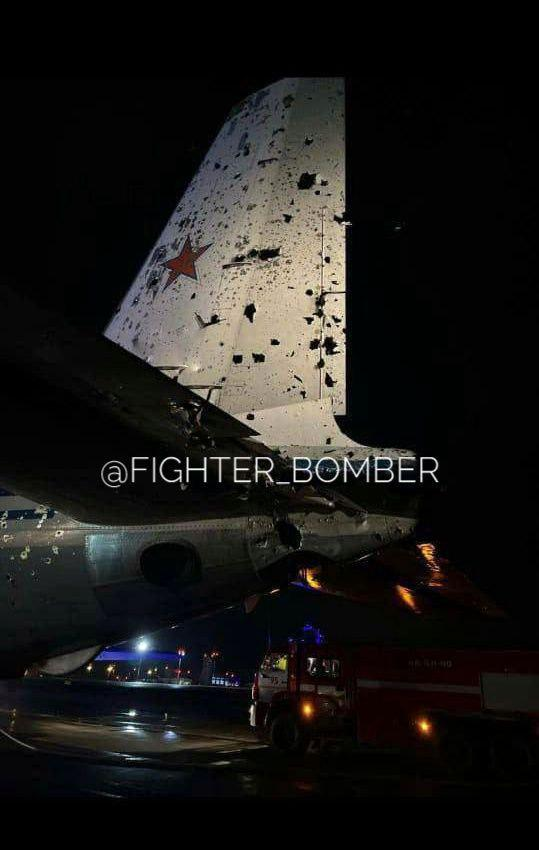Article text
The New York Times is finally acknowledging that the September 6 deadly impact of a missile in the center of Kostiantynivka was caused by a Ukrainian missile:
Evidence Suggests Ukrainian Missile Caused Market Tragedy
One wonders what took them so long.
The Sept. 6 missile strike on Kostiantynivka in eastern Ukraine was one of the deadliest in the country in months, killing at least 15 civilians and injuring more than 30 others. The weapon’s payload of metal fragments struck a market, piercing windows and walls and wounding some victims beyond recognition.
Less than two hours later, President Volodymyr Zelensky blamed Russian “terrorists” for the attack, and many media outlets followed suit.
The New York Times was of course one of those media outlets that had spread Zelenski's lies:
The attack clouded Secretary of State Antony J. Blinken’s unannounced visit to Kyiv, the Ukrainian capital, the same day, one of the highest-level visits by a U.S. official to there since President Biden visited in February. Mr. Blinken met with President Volodymyr Zelensky, announced more than $1 billion in new U.S. aid for Ukraine and praised its people’s valor and resilience in the face of what he called Russia’s “horrific” aggression.
Just hours after the impact several bloggers has already found that the missile had come from the Ukrainian side. The next day the Conflict Intelligence Team (CIT) published a report about it:
On Sept. 6, a missile strike rocked Kostiantynivka, a town in the Donetsk region under the control of the Armed Forces of Ukraine. The missile hit a bustling city market at 2:04 p.m. local time, leaving 16 dead and 33 injured. Photos and videos of the aftermath of the strike have been circulated by various media outlets worldwide.
The videos showed evidence that the missile had come from the Ukrainian side. Ironically the main one had been published by Zelenski's office:
CCTV footage published on President Volodymyr Zelenskyy’s official Telegram channel captured not only the moment of impact, but also the preceding few seconds when bystanders turn their heads, alerted by the sound of the incoming missile. Additionally, the missile’s reflection can be seen on the roofs of two parked cars in different frames of the video. Based on the geolocation of the video, and these reflections, we can say with a high degree of confidence that the missile flew in from the north-west.
...
The nearest Russian positions are located approximately 18–19 km east and southeast of Kostiantynivka, as to the northwest, the missile could only have been launched from Russian territory in the vicinity of Grayvoron in the Belgorod region at a distance of about 250 km. Since we consider such a scenario to be unlikely, it is reasonable to assume that it was an accidental Ukrainian missile strike.
This version is also indirectly supported by a report about missile launches from aircraft south of Druzhkivka posted at 2:01 p.m. by a pro-Russian Telegram channel, where locals loyal to Russia report on Ukrainian Air Force activity. Druzhkivka is located just northwest of Kostiantynivka.
The strike was assessed to have been by a U.S. AGM-88 anti radar missile:
Pro-Russian Telegram channels assume that it was an AGM-88 HARM missile. The AFU regularly uses such missiles in the Donetsk region—for example, yesterday we reported a hit by such a missile on a residential building in Donetsk. There were also other incidents near Horlivka; fragments of a HARM missile were found on Sept. 1 near Holmivskyi, 30 kilometers southeast of Kostiantynivka.
...
Currently, there are no photos of the missile debris, making it impossible to identify it. In the reflections seen in the video, no details of its construction can be discerned. Despite the existence of missiles capable of making turns in the air (e.g., the 9K720 Iskander mobile short-range ballistic missile), in this case, there are far more direct and indirect pieces of evidence in favor of an accidental strike by an AGM-88 HARM missile.
The New York Times report disagrees with this missile assessment:
But evidence collected and analyzed by The New York Times, including missile fragments, satellite imagery, witness accounts and social media posts, strongly suggests the catastrophic strike was the result of an errant Ukrainian air defense missile fired by a Buk launch system.
...
Further evidence reveals that minutes before the strike, the Ukrainian military launched two surface-to-air missiles toward the Russian front line from the town of Druzhkivka, 10 miles northwest of Kostiantynivka.
Reporters with The Times were in Druzhkivka when they heard an outgoing missile launch at 2 p.m., followed a few minutes later by a second. By chance, one member of the team recorded the first launch in a voice message.
...
In the aftermath of the attack, Ukrainian authorities said Russian forces used a missile fired by an S-300 air defense system, which Russia has used both to intercept aircraft and strike targets on the ground. But an S-300 missile carries a different warhead from the one that exploded in Kostiantynivka.
The metal facades of buildings closest to the explosion were perforated with hundreds of square or rectangular holes, probably made by cube-like objects blown outward from the missile.
Measurements of the holes — and fragments found at the scene — are consistent in size and shape with one weapon in particular: the 9M38 missile, which is fired by the mobile Buk antiaircraft vehicle. Ukraine is known to use the Buk system, as is Russia.
Some of the holes are less than 10 millimeters in width, while others are slightly larger. The 9M38 contains two different sizes of solid-metal cubic fragments: eight millimeters and 13 millimeters across.
That impact damage evidence is less convincing than the Times makes it sound. It could have equally have come from a AGM-88 HARM missile:
The warhead section is designed to inflict sufficient damage on the target antenna and waveguide system to force an inoperative condition. It also ensures complete destruction of the HARM Missile guidance section. The AGM-88A, and AGM-88B warhead section contains 25,000 pre-formed steel fragments, an explosive charge, a fuze, and a fuze booster. The AGM-88C utilizes an improved warhead section containing 12,845 tungsten fragments and an improved explosive charge which provides greater overall lethality.
The fragmentation damage could have been caused by both types of weapons. The sound of the missile launch heard by the Times reporter could also have come from either type. But whatever type of missile it was we can be sure that it was launched by the Ukrainian side.
One question is not answered by The New York Times report. Why did it take twelve days to publish its report when it took only hours after the impact to find convincing evidence of a Ukrainian missile impact?
And why was this published the very day President Zelenski arrives in New York and shortly before he will meet President Biden in the White House?
Are the knives out to cut the liar to size?
 <(YES.)
<(YES.)
very brave stance, redditor